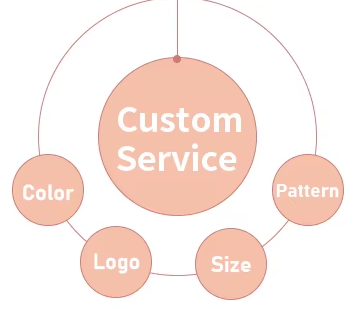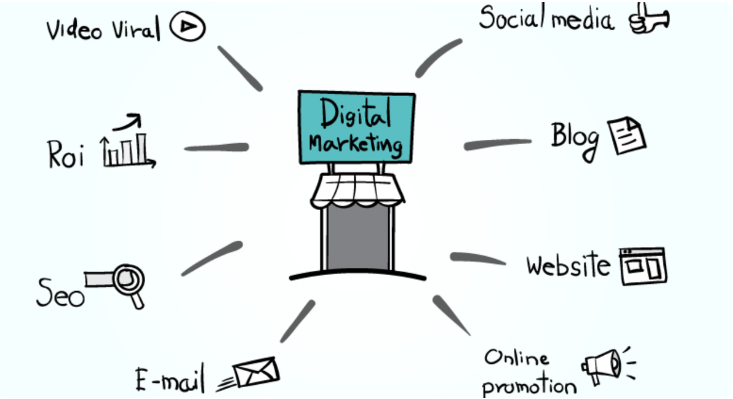Thinking about starting a yoga brand? I understand it can be hard to know where to begin. In my experience, just selling any yoga mat isn’t enough these days. I believe it’s far more important to create something that establishes a real connection with people’s needs and what they hold important. I suggest you think about offering custom yoga mats that feel fantastic. They also need to look wonderful. Crucially, these yoga mats should reflect what your future customers value most. Many new yoga business owners I’ve seen tend to miss one simple action. This action can make their brand distinct right from the start…
Know Your Target Market

To build your yoga brand, I suggest you first understand your target market. It’s very important. I recommend you start by defining who your ideal customer is. For instance, are you targeting beginners? They often need supportive mats that are easy to use. Or perhaps I’m thinking about prenatal yoga practitioners. They would search for special mats that give extra comfort and safety. I’d also consider the premium lifestyle market. From my experience, high-income consumers might prefer custom TPE yoga mats that highlight sustainability and luxury.
Analyze Competitors
It’s a good idea to study your competitors well. I try to find out which yoga mat types are popular now. I also look at what features attract customers. This way, I can get good ideas about pricing. For example, some custom yoga mats sell for $30 to $100. The price often depends on the materials and how they are designed. With this information, I can better define my brand’s unique place in the market. This makes it easier for my brand to stand out.
Connect with Lifestyle and Wellness Philosophy
To connect more with your audience, I suggest linking your brand to a lifestyle or wellness idea they can relate to. In my observation, many yoga lovers are attracted to brands. These brands promote values like mindfulness, sustainability, or community. If I position my custom TPE yoga mats along these lines, they will appeal more to my target customers. This should also encourage them to stick with my brand.
If I follow these suggestions, I will understand my audience better. I can also create a yoga brand that truly speaks to their values and what they need.
Why Start with TPE Yoga Mats?
If you want to build a successful yoga brand, I think starting with custom TPE yoga mats gives you some strong benefits.
Overview of TPE Material
TPE, which stands for thermoplastic elastomer, is a material that I find good for the environment and non-toxic. I’ve found it offers a great grip, so it’s anti-slip. TPE mats are also lightweight. I believe this makes them easy to carry. You can use them in many different places.
Advantages Over PVC and Rubber Mats
When I compare them to PVC and rubber mats, TPE yoga mats have clear advantages. They are better for our planet because TPE can be recycled. I notice users like how durable they are. TPE mats often last longer and don’t show wear as much. These mats don’t have harmful chemicals. I think this helps people have a healthier yoga session.

How TPE Positions Your Brand in the Mid-to-High-End Market
I believe offering custom TPE yoga mats helps you place your brand in the mid-to-high-end market. I find this material attracts customers who want sustainable choices. They also want good quality. Prices usually go from $30 to $100. In my experience, TPE mats are for higher-income shoppers. These shoppers look for luxury and earth-friendly yoga gear.
So, I recommend starting with TPE yoga mats. It fits what the market wants now. It also connects with what your target customers care about.
Expert Opinion:
“From my perspective, TPE yoga mats are a great mix of being eco-friendly, high-performing, and well-positioned in the market for new yoga brands. Based on my 15+ years of experience with sustainable fitness materials, I find TPE is the top choice for entrepreneurs who care about the planet. I believe TPE is very attractive for new brands because you can customize it in many ways, and it still stays eco-friendly. I’ve noticed their price, usually $30-$100, allows for good profit margins. These profits are vital in the first few crucial years when a business is starting. Even better, I think starting with TPE helps establish your brand as a premium choice. This attracts customers who will be more valuable over time. My advice to new yoga entrepreneurs is always this: start with your best quality product. It’s far simpler to build a top-tier reputation from day one than to try and change how people see your brand later on.”
———— Emma Greenfield , Sustainable Materials Consultant and Former Product Development Director at Lululemon
How to Customize Your Yoga Mats
If you want to customize your yoga mats, I suggest focusing on a few important areas. These should attract your specific customers and make their experience better.
Choosing Thickness, Texture, and Patterns
The thickness of your yoga mat is very important for comfort and how stable it feels. For instance, options like 6mm vs. 8mm suit different people. I find beginners often like thicker mats because they offer more cushioning. More experienced yogis, in my experience, might choose thinner mats because they want a more stable base. You could also look at double-layer designs. These tend to be stronger and give the mat more texture. Having different textures means more customers might find something they like, and it can help with grip during practice.
Color Matching, Branding, and Adding Your Logo
Picking the right color scheme for your mats is key for your brand’s image. I recommend choosing colors your target customers will like, maybe calming greens or bright pinks. Putting your brand logo where people can see it helps them remember you. I also suggest making sure your branding matches what your audience cares about, like being eco-friendly or practicing mindfulness.
Adding Motivational Quotes or Symbolic Imagery
Adding motivational quotes or symbolic images to your mats can make them feel more personal and inspiring for people using them. These kinds of details can help you connect more with your customers. I suggest you think about quotes that fit with yoga ideas or symbols that represent wellness and calm.
Custom Packaging Options
I believe good custom packaging is really important. Offering things like carry straps, bags made from earth-friendly materials, and nice boxes can make customers happier. You could also add small cards that share your brand’s story or explain how your TPE yoga mats are sustainable. This protects the mat, makes your brand look better, and appeals to customers who care about the planet.
When you pay attention to these customization details, I think you can create appealing yoga mats. These mats will also show what your target market values and needs. This approach should boost your brand’s visibility in the yoga world.
Finding the Right Manufacturer
If you want to build your yoga brand, I think choosing the right manufacturer for your custom TPE yoga mats is very important. From my experience, a good manufacturer really influences your product’s quality, cost, and how quickly you get them.

Key Factors When Selecting a Reliable TPE Mat Supplier
- Experience and Reputation: I recommend you research manufacturers. Look for those with a solid history of making TPE yoga mats. I also suggest you find reviews and comments from their past clients.
- Production Capacity: You need to make sure the manufacturer can produce enough mats for your needs. This is important if you plan a big product launch.
- Material Quality: I suggest you confirm the supplier uses top-quality TPE. It should also be kind to the environment if sustainability is important for your brand.
Requesting and Evaluating Product Samples
Before you commit, I recommend you always ask for samples of their TPE yoga mats. I think you should check these samples for how long they last, how they feel, and their grip. This way, you get a direct look and will know the quality you can expect.
MOQ (Minimum Order Quantity) and Cost Considerations
You discuss the manufacturer’s MOQ (Minimum Order Quantity). For custom yoga mats, this number often changes. It can be from a few hundred to thousands. You’ll need to balance your budget with the costs of making your custom designs. From what I’ve seen, pricing often relies on the materials and how complex your design is. It often costs between $30 to $100 for each mat.
Importance of Quality Control and Certifications (SGS, RoHS, etc.)
You choose a manufacturer that really cares about quality control. You should check if they have certifications like SGS or RoHS. These show they meet health and safety standards. I believe this helps make sure your customers get safe, top-quality products.
In my experience, if you focus on these areas when choosing a manufacturer, you will build a solid foundation for your yoga brand. If you want to save time, I recommend FDM yoga mat manufacturers, both the product and the service are great.
Marketing Strategy & Sales Channels
I believe a solid marketing plan is key to launching your yoga brand. I’d suggest really getting to know your audience. Then, use a few different sales channels to connect with them.

Social Media Marketing (Instagram, TikTok, Pinterest, Xiaohongshu)
Using social media like Instagram and TikTok. This can make your brand much more visible. I suggest you create interesting content. Show your custom TPE yoga mats in use. Point out benefits like their eco-friendliness and comfort. You can use Pinterest to share infographics and style ideas for yoga. This can guide people to your online store. If you’re aiming for Chinese customers, I think Xiaohongshu is a fantastic choice. Share lifestyle posts that you believe will connect with yoga fans there. For example, you could show serene yoga poses in different natural settings or quick tutorials on how to choose the right mat thickness for various yoga types.
Selling on Marketplaces vs. Building Your Own E-commerce Site
I recommend you weigh the options for selling. You could use marketplaces like Amazon or Etsy. Or, you could build your own e-commerce site. Marketplaces give you access to many customers straight away. But, I’ve seen that you usually have less say over your branding, and the fees can be higher.
Having your own e-commerce site gives you much more freedom. You can showcase your unique yoga mats just how you want. You also get to control the entire customer experience. I believe this makes it easier to share your brand’s unique story and connect with your customers on a deeper level. For example, you could have detailed blog posts about the eco-friendly TPE material or customer testimonials directly on your site.
Offline Strategies: Yoga Studio Partnerships, Pop-ups, Wellness Events
I also suggest you explore offline marketing ideas. I think these can be very effective. For example, you could team up with local yoga studios. They might be willing to showcase your TPE mats during their classes or workshops. I’ve found that attending wellness events or hosting pop-up shops is a great way to introduce your brand to your target audience face-to-face. When you offer product demonstrations and chat with people, you create a personal connection. In my experience, this really helps build lasting brand loyalty. For instance, at a wellness event, you could let people try out the mats and feel the quality of the TPE material firsthand.
Build Trust & Loyalty
To build trust and loyalty for your yoga brand, I believe it’s important to create a strong bond with your audience. I also recommend you show your commitment to quality and being eco-friendly.

Using Reviews, Testimonials, and UGC (User-Generated Content)
I suggest you ask your customers to share their experiences with your custom TPE yoga mats. Good reviews and stories from customers can show off product benefits, like being eco-friendly and durable. User-generated content (UGC) builds community. It lets potential customers see your mats in real-life situations. I recommend sharing this content on your social media. Show how happy customers use your mats in different settings. This helps build credibility. It also encourages others to trust your brand.
Loyalty Programs and Second-Purchase Rewards
A loyalty program really helps keep customers returning. I suggest you offer discounts on future purchases for customers who buy your custom TPE yoga mats. This shows you value them and encourages repeat business. I think you could design the program to reward customers for referrals or social media shares. These incentives create a feeling of community. They make customers want to come back to your brand.
More Products: Yoga Clothes, Blocks, Straps, Accessories
To build more brand loyalty, I recommend you think about adding more products than just custom TPE yoga mats. If you add yoga clothes, blocks, straps, and accessories, your customers can find all their yoga needs with you. This approach helps keep customers. It also strengthens your brand identity. When you offer products that go together, I believe you improve the customer’s experience. This makes them more loyal to your brand.
summary
From my experience building a yoga brand, I believe custom TPE yoga mats are an excellent starting point. I think they offer a solid foundation. I suggest you first really get to know your market. Then, finding a good manufacturer is a smart move. With thoughtful marketing, you will create more than just items. I feel you will build a real community. Staying true to your values is so important, in my view. Connecting with your customers in an honest way matters a lot. I have seen that the top yoga brands don’t just sell mats. They aim to inspire healthier and more mindful living. Your journey is starting now, and I am excited to see where it takes you.

